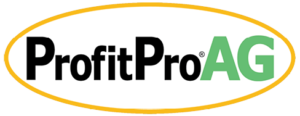Better Forage, Powered by Algae, Boosts Profit Potential
A good mineral program is a good insurance policy. However, when input costs rise, it’s tempting to eliminate mineral supplements or replace them with a less expensive, lower-quality option. What if you could grow more nutrient-dense forage for higher performance, productivity, and profitability?
It’s not only possible but effective when you supercharge your soil with one of the hottest technologies around that’s as old as time—algae.
Counting the cost of mineral supplementation
First, let’s review a little about minerals and ruminant production. Minerals that typically require supplementation include calcium, phosphorus, magnesium, sodium, cobalt, copper, iodine, manganese, selenium, and zinc.
The problem is that many common feedstuffs are deficient in one or more minerals. This can contribute to a host of challenges, from lower pregnancy rates to higher pull rates.
Based on data from the University of Kentucky, the estimated cost of mineral supplementation ranges from $5.12 per cow per year for a white salt block, to $32.94 for a complete mineral (with inorganic selenium). A complete mineral with a blend of selenium totals $41.06 per cow per year.
Supplying the most nutritious forage possible, most cost-effectively, is important to Bob Henderson and his sons Aaron, Adam, and Andy, who farm near Albia, Iowa. They’ve been exploring some non-traditional options, like EnSoil Algae™, a live-cell green algae to help them get more nutrient-dense forage from their acres.

“Algae is a living plant without roots, stems, or leaves, but it promotes biodiversity,” said Dennis Klockenga, a Certified Crop Adviser (CCA) and crop management consultant with ProfitProAG who works with the Hendersons. “This incredible technology improves soil function, promotes plant health, boosts yield potential, and helps produce more nutrient-dense food.”
ProfitProAG is a distributor for EnSoil Algae™, which harnesses the power of Chlorella vulgaris (Latin for “common green”) to build the soil biology bank. This ancient species of freshwater green algae is found almost everywhere around the globe, and it’s extremely durable. “It can be tank-mixed and sprayed, either on the soil or through foliar applications,” Klockenga said. “It helps improve yield potential by helping unlock free fertilizer that’s already in the soil.”
The numbers prove it. Just ask Bryan Mussard and his family, who run 600 head of black Angus cattle near Dillon, Montana. For the past two years, Mussard has applied EnSoil Algae™ to native grass pasture and hay fields. He makes one to three applications of EnSoil Algae™ to pasture, hay, and corn. He also feeds approximately 7,000 cattle each winter.
The algae-treated pasture grass at the Mussard family’s Reminisce Angus Ranch remains greener longer, allowing longer grazing. Mussard also reports:
- Lower intake of mineral supplements
- Increased conception rates (7-9%)
- Fewer cattle deaths during the winter
In the past, Mussard’s cattle needed supplemental minerals due to nutrient deficiencies in pasture grass. In the algae-treated pasture, mineral intake in summer pasture for yearlings dropped from 19 bags (each weighing 50 pounds) to one bag during 90 days. In a fall pasture, the mineral protein intake was reduced from nine bags per week to 1.5 bags per week.
These results reflect the action of EnSoil Algae™ alone. No other regen-ag or organic soil amendments were used to cultivate the pastures or hayfields. Mussard, who purchases hay and feed from multiple providers, now requires that his suppliers grow feed using EnSoil Algae™.
Put algae to work for you
EnSoil Algae™ is a key part of ProfitProAG’s 3-Phase Recipe for Success. The algae help growers produce forages with improved nutrient content, energy, taste, storability, and reduced mycotoxins. “The Recipe for Success isn’t a cookie-cutter plan,” Klockenga noted. “It’s tailored to your acres, whether you raise forages, small grains, soybeans, corn, or cover crops.”
A custom-designed Recipe for Success program is an integral part of the Hendersons’ regenerative farming operation. “Farming this way requires a change in your mindset, but it’s worth it,” Bob Henderson said. “I look for ways to focus on soil biology and plant health first.”
Want to know more about how EnSoil Algae™ and ProfitProAG’s Recipe for Success can help you raise more nutrient-dense forage? Contact Dennis Klockenga at 320-333-1608, or dklockenga@profitproag.com for more details.
Office – 507-373-2550 / info@profitproag.com
Dr. Jim Ladlie – 507-383-1325 / jladlie@profitproag.com
Dennis Klockenga – 320-333-1608 / dklockenga@profitproag.com
Chris Chodur – 507-402-4195 / cchodur@profitproag.com
Coltin Coffeen – 920-530-7127 / ccoffeen@profitproag.com
